These 10 exceptional medium format cameras represent the absolute pinnacle of analog photography technology, where legendary manufacturers pushed engineering boundaries to create tools worthy of the world's most demanding photographers. From the whisper-quiet precision of legendary rangefinders to the modular perfection of Swedish engineering icons, these cameras deliver image quality and shooting experiences that justify their premium pricing through decades of proven professional performance.
1. Hasselblad 503CW
Expect to Pay: $2,000-3,000
The Hasselblad 503CW stands as the ultimate expression of Swedish engineering precision, representing the final evolution of the legendary V-system that defined professional medium format photography for over four decades. Released in 1996 as Hasselblad's contemporary flagship, the 503CW incorporates modern conveniences like improved film advance mechanisms and refined ergonomics while maintaining the timeless modular design that made these cameras indispensable tools for fashion photographers, studio professionals, and NASA astronauts alike. The camera's leaf-shutter lenses provide flash synchronization at all speeds up to 1/500 second, creating unparalleled versatility for complex lighting scenarios where precise control determines creative success.
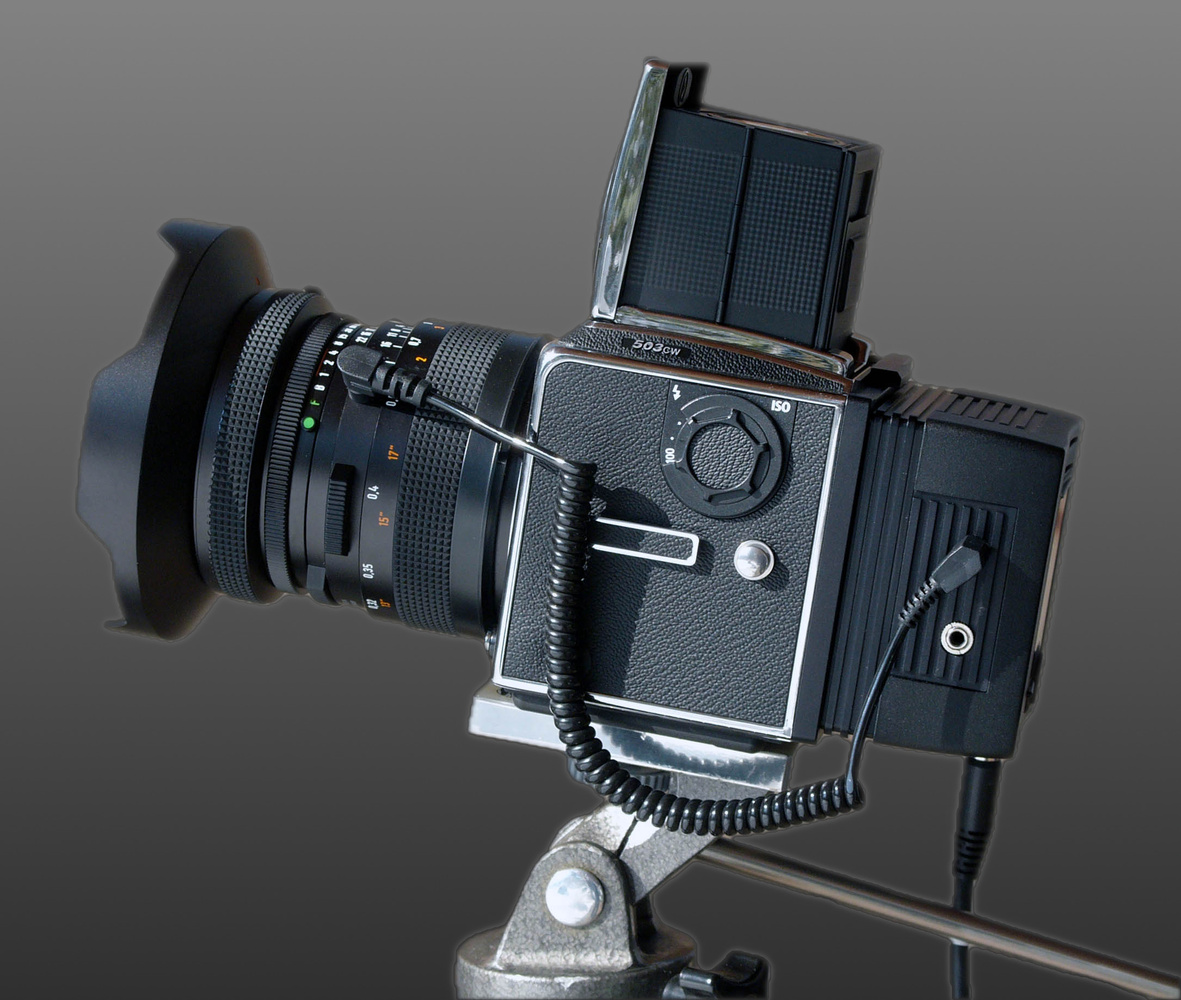
The 6x6 format provides perfectly square negatives that offer unique compositional opportunities while delivering enlargement quality that remains impressive even by contemporary digital standards. The camera's through-the-lens viewing system, available with various prism and waist-level finders, provides bright, accurate composition that makes manual focusing accurate and enjoyable. While the 503CW commands premium prices reflecting its professional pedigree and Swedish craftsmanship, it represents the ultimate investment for photographers who demand uncompromising quality and proven reliability. For many professionals, owning a Hasselblad isn't just about having excellent equipment; it's about joining a tradition of photographic excellence that spans generations.
2. Mamiya 7II
Expect to Pay: $2,500-3,500
The Mamiya 7II represents the absolute pinnacle of medium format rangefinder design, combining the contemplative shooting experience that defines rangefinder photography with modern conveniences and optical excellence that satisfy the most demanding professionals. Released in 1999 as the ultimate evolution of Mamiya's 6x7 rangefinder system, the 7II incorporates sophisticated multi-format capability, precise electronic metering, and whisper-quiet operation that makes it ideal for documentary photography, street work, and any situation where discretion and exceptional image quality are equally important. The camera's leaf-shutter lenses provide flash synchronization at all speeds, while the bright, clear rangefinder mechanism ensures accurate focusing across various lighting conditions.
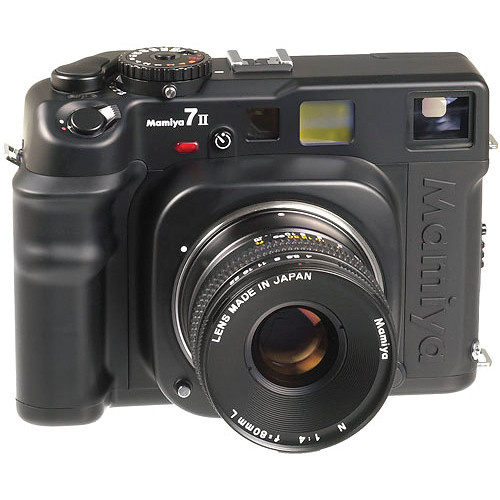 What distinguishes the Mamiya 7II from other rangefinder cameras is its remarkable lens lineup that ranges from ultra-wide 43mm options to 150mm telephotos, each designed to deliver optical performance that justifies the system's professional reputation. The camera's sophisticated metering system provides accurate readings in both spot and average modes, while the bright frame lines clearly delineate composition for multiple focal lengths. Mamiya's engineering excellence helps ensure the rangefinder mechanism maintains perfect calibration even after years of professional use, while the camera's compact size and light weight make it practical for travel and handheld photography where larger medium format cameras would prove cumbersome.
What distinguishes the Mamiya 7II from other rangefinder cameras is its remarkable lens lineup that ranges from ultra-wide 43mm options to 150mm telephotos, each designed to deliver optical performance that justifies the system's professional reputation. The camera's sophisticated metering system provides accurate readings in both spot and average modes, while the bright frame lines clearly delineate composition for multiple focal lengths. Mamiya's engineering excellence helps ensure the rangefinder mechanism maintains perfect calibration even after years of professional use, while the camera's compact size and light weight make it practical for travel and handheld photography where larger medium format cameras would prove cumbersome.
The 6x7 format delivers rectangular negatives that provide exceptional enlargement capabilities while maintaining reasonable film economy with 10 exposures per roll of 120 film. The camera's dedicated 6x7 format ensures optimal image quality without compromise, while an optional 35mm panoramic kit enables specialized panoramic photography for photographers seeking ultra-wide compositions. The 7II's quiet operation and precise controls appeal to photographers who appreciate the deliberate, methodical approach that rangefinder cameras encourage, where every frame requires conscious composition and focusing decisions. For photographers seeking the ultimate in portable medium format quality with authentic rangefinder character, the Mamiya 7II represents one of photography's most refined and capable tools.
3. Contax 645
Expect to Pay: $2,000-4,000
The Contax 645 represents the perfect marriage of German optical excellence with Japanese manufacturing precision, creating a camera system that delivers studio-quality results with the handling characteristics that professional photographers demand. Released in 1999 as Contax's flagship medium format offering, this camera incorporates sophisticated autofocus technology, comprehensive metering modes, and Carl Zeiss optics that establish new standards for 645 format image quality. The camera's electronically controlled focal plane shutter operates from 32 seconds to 1/4,000 second, providing creative flexibility that leaf-shutter systems cannot match while maintaining the precise timing that professional work demands.
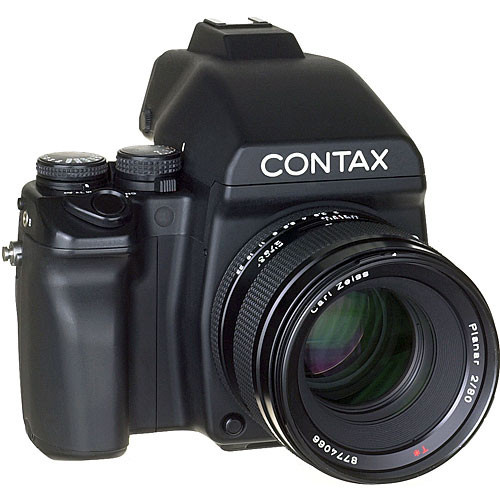
Contax's collaboration with Carl Zeiss resulted in a lens lineup that many consider the finest ever produced for 645 format cameras, with optics that deliver stunning sharpness, contrast, and color rendition across their entire range. The camera's sophisticated autofocus system operates with remarkable speed and accuracy, while its multi-mode metering handles challenging lighting conditions with confidence that allows photographers to concentrate on composition and timing rather than exposure calculations. What sets the 645 apart from other autofocus medium format cameras is its exceptional ergonomics and intuitive control layout that makes complex operations feel natural and immediate.
The 645 format provides an ideal compromise between image quality and practicality, delivering negatives that offer significant advantages over 35mm while maintaining reasonable film costs and allowing 16 exposures per roll. The camera's professional features include multiple exposure capability, depth-of-field preview, and comprehensive flash control that make it particularly popular among portrait, fashion, and commercial photographers who demand both technical excellence and reliable operation. While Contax cameras command premium prices reflecting their German optical heritage, the 645 represents arguably the pinnacle for photographers seeking the ultimate in 645 format quality with contemporary convenience and proven professional capabilities.
4. Rolleiflex 2.8F
Expect to Pay: $1,500-2,500
I just love this camera so much. The Rolleiflex 2.8F stands as the undisputed pinnacle of twin-lens reflex camera design, representing German engineering and optical excellence at its absolute finest. Released in 1960 as the ultimate expression of Rollei's TLR expertise, the 2.8F incorporates a legendary 80mm f/2.8 Planar or Xenotar taking lens that delivers image quality rivaling much larger format cameras while maintaining the compact elegance that defines the Rolleiflex aesthetic. The camera's leaf shutter operates from 1 second to 1/500 second with mechanical precision that remains consistent even after decades of use, while its sophisticated light meter provides accurate exposure guidance through an elegant system that doesn't interfere with the classic TLR shooting experience.
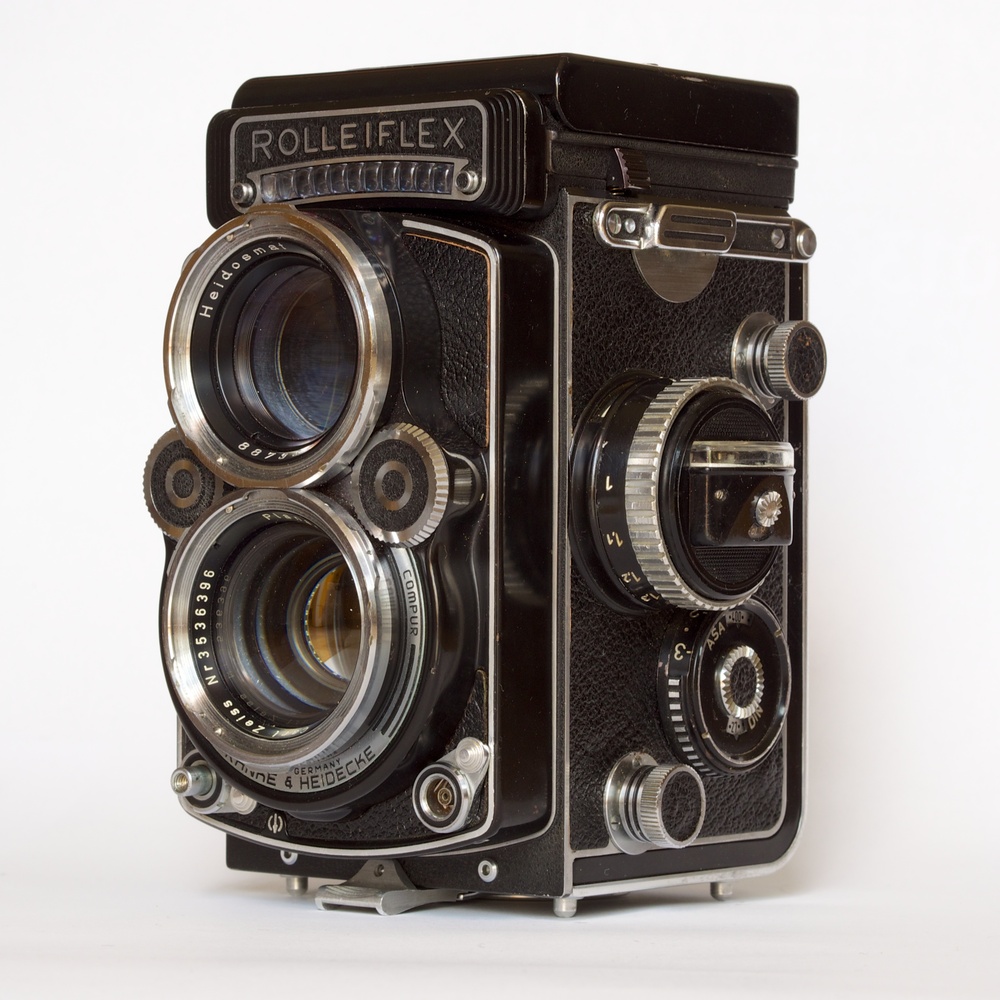
Photo by Sputniktilt, used under CC 3.0 license.
The 6x6 format provides square negatives that offer unique compositional opportunities while delivering enlargement quality that remains impressive even by contemporary standards. The camera's waist-level viewfinder encourages the contemplative, deliberate approach that often results in stronger compositions, while its compact size and reasonable weight make it practical for extended shooting sessions. The 2.8F's mechanical operation ensures complete independence from battery power for all essential functions, making it reliable in extreme conditions where electronic cameras might fail. For photographers seeking the ultimate TLR experience with proven German quality, the 2.8F represents the finest expression of this classic camera design and continues to produce distinctive images that capture the essence of analog photography.
5. Fujifilm GF670
Expect to Pay: $2,500-3,500
The Fujifilm GF670 represents the final evolution of medium format rangefinder design, incorporating modern manufacturing techniques and contemporary convenience features while maintaining the classic shooting experience that defines rangefinder photography. Released in 2008 as Fuji's premium folding camera, the GF670 delivers exceptional image quality through its sharp 80mm f/3.5 lens while offering dual format capability that allows switching between 6x6 and 6x7 compositions through simple frame selection. The camera's leaf shutter operates from 4 seconds to 1/500 second with electronic precision, while its sophisticated metering system provides accurate exposure readings that ensure consistent results across varied shooting conditions.
 What distinguishes the GF670 from other rangefinder cameras is its remarkable folding design that collapses into an incredibly compact package while maintaining the precision manufacturing that professional photography demands. The camera's bright, clear rangefinder mechanism ensures accurate focusing, while the crisp frame lines clearly delineate composition for both 6x6 and 6x7 formats. Fuji's engineering excellence manifests in the camera's reliable operation and sophisticated electronics that include multiple exposure modes, compensation controls, and comprehensive flash capability that rival much larger camera systems.
What distinguishes the GF670 from other rangefinder cameras is its remarkable folding design that collapses into an incredibly compact package while maintaining the precision manufacturing that professional photography demands. The camera's bright, clear rangefinder mechanism ensures accurate focusing, while the crisp frame lines clearly delineate composition for both 6x6 and 6x7 formats. Fuji's engineering excellence manifests in the camera's reliable operation and sophisticated electronics that include multiple exposure modes, compensation controls, and comprehensive flash capability that rival much larger camera systems.
The dual format capability provides creative flexibility that allows photographers to choose the ideal composition for each subject, with 6x6 offering square compositions perfect for portraits and artistic work, while 6x7 provides rectangular frames ideal for landscapes and commercial photography. The camera's compact folded size makes it exceptionally practical for travel photography, while its quiet operation and discrete appearance make it ideal for street photography and documentary work where drawing attention would compromise the shooting experience. For photographers seeking the ultimate in portable medium format quality with contemporary reliability, the GF670 represents one of the finest cameras ever produced, combining classic rangefinder character with modern convenience and proven optical excellence. Hey Fuji, can we have a digital version!?
6. Pentax 645NII
Expect to Pay: $700-1,100
The Pentax 645NII represents the ultimate evolution of autofocus medium format photography, incorporating sophisticated technology and contemporary convenience features that transform medium format shooting from a deliberate, methodical process into something approaching the spontaneity of modern digital photography. Released in 2001 as the culmination of Pentax's 645 development, the NII incorporates advanced multi-segment metering, reliable autofocus operation, and comprehensive flash control that satisfy the most demanding professional applications. The camera's electronically controlled focal plane shutter operates from 30 seconds to 1/1,000 second, providing creative flexibility that enables everything from long exposure photography to action capture with reasonable speed.

The 645 format provides the ideal compromise between image quality and practicality, delivering negatives that offer significant advantages over 35mm while maintaining reasonable film costs and allowing 16 exposures per roll. The camera's motorized operation and quick handling make it particularly suitable for wedding photography, portraiture, and fashion work where medium format quality must be combined with reasonable shooting speed. Advanced features like spot metering, multiple exposure capability, and comprehensive flash control add creative flexibility, while the camera's reliable construction ensures years of dependable professional service. For photographers seeking medium format quality with contemporary convenience and proven reliability, the 645NII represents exceptional value and sophisticated capability that bridges traditional and modern photography approaches.
7. Koni-Omega Rapid
Expect to Pay: $200-300
The Koni-Omega Rapid stands as one of the most distinctive and capable press cameras ever produced, combining the reliability and optical quality of German engineering with the innovative design that made it a favorite among photojournalists and commercial photographers worldwide. Released in the 1960s as a collaboration between Konishiroku and Simmon Bros, this camera delivers exceptional 6x7 image quality through interchangeable lenses while maintaining the quick handling characteristics that press photography demands. The camera's leaf-shutter lenses provide flash synchronization at all speeds, while the bright, clear rangefinder mechanism ensures accurate focusing even in challenging lighting conditions that would challenge other camera systems.

The 6x7 format provides rectangular negatives that offer exceptional enlargement capabilities while maintaining reasonable film economy. The camera's modular design allows photographers to configure it for specific applications, whether that's wide angle architectural work or telephoto sports photography, while maintaining the system's characteristic reliability and optical excellence. The Koni-Omega Rapid's robust construction and mechanical precision ensure reliable operation even in demanding conditions, while its distinctive appearance and smooth operation appeal to photographers who appreciate cameras with genuine character and proven professional capability.
8. Horseman 985
Expect to Pay: $300-500
The Horseman 985 represents a fascinating hybrid between medium format convenience and large format capability, offering the camera movements and precision that define technical photography in a package that remains practical for handheld operation. Released as part of Horseman's innovative approach to portable large format photography, the 985 incorporates front and rear standard movements including rise, fall, and tilt that enable perspective control and selective focus effects impossible with conventional medium format cameras. The camera's modular design accepts various film backs and lenses, creating a system that bridges the gap between medium format portability and large format creative control.
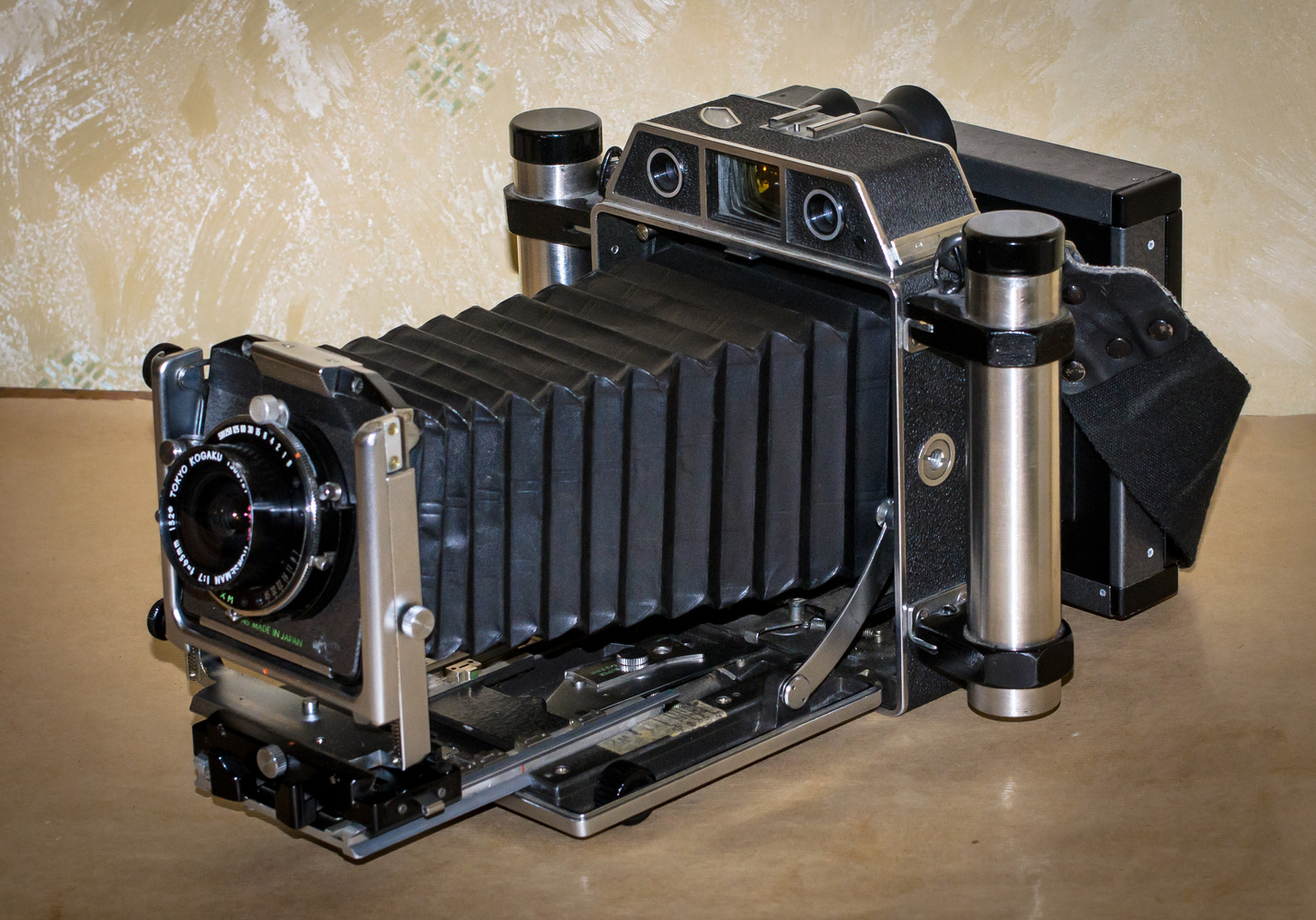
The camera's compatibility with various film formats and backs provides exceptional versatility, allowing photographers to choose the ideal combination of image quality and economy for each assignment. The 985's technical capabilities make it particularly popular among architectural, commercial, and fine art photographers who need large format control without the bulk and complexity of traditional view cameras. While the camera requires more deliberate operation than conventional medium format systems, photographers who master its capabilities discover creative possibilities that justify the learning investment. For photographers seeking technical camera capabilities with medium format practicality, the Horseman 985 represents a unique and highly capable tool that expands creative possibilities beyond conventional camera limitations.
9. Linhof Technika 70
Expect to Pay: $800-1,200
The Linhof Technika 70 represents the absolute pinnacle of folding rangefinder design applied to 6x7 medium format photography, combining legendary German engineering precision with the portability and quick handling that define professional press cameras. Released as Linhof's premium medium format offering, the Technika 70 incorporates the precision manufacturing and attention to detail that established Linhof's reputation among the world's most demanding professional photographers, wrapped in an elegant folding design that collapses into a remarkably compact package. The camera's sophisticated rangefinder mechanism provides accurate focusing across various lighting conditions, while its leaf-shutter lenses offer flash synchronization at all speeds for maximum lighting flexibility.
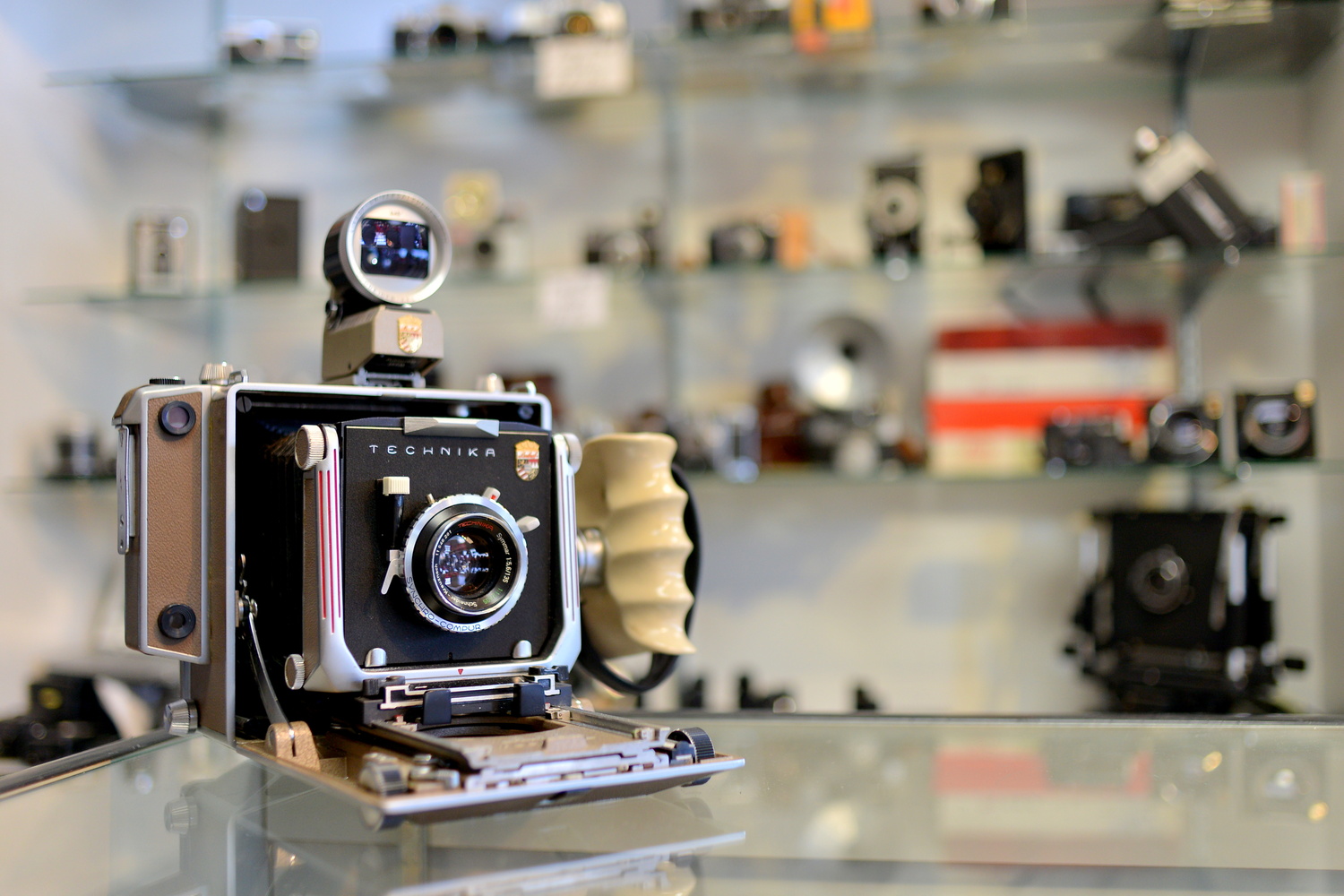
The 6x7 format provides rectangular negatives that offer exceptional enlargement capabilities while maintaining reasonable film economy and handling characteristics that make the camera practical for professional location work. The Technika 70's premium construction and German engineering make it particularly appealing to professionals who demand the finest build quality and optical excellence in a portable package that can handle demanding assignment work. While the camera commands premium prices reflecting its German engineering and specialized manufacturing, it represents the ultimate expression of folding rangefinder design for photographers who demand uncompromising quality. For professionals seeking the finest portable medium format camera ever produced, the Technika 70 represents an investment in proven German quality and exceptional craftsmanship.
10. Fuji GX680III
Expect to Pay: $400-1,200
The Fuji GX680III stands as one of the only medium format SLR cameras ever produced with comprehensive front standard movements, creating a unique hybrid that combines the precision viewing and accurate composition of SLR design with the perspective control capabilities that define technical photography. Released in the 1990s as Fuji's flagship studio camera, the GX680III incorporates rise, fall, shift, tilt, and swing movements that enable complete perspective control while maintaining through-the-lens viewing that makes precise composition and focusing possible even with extreme movements applied. The camera's electronic shutter system operates with remarkable precision, while its sophisticated metering provides accurate readings even when movements are applied.
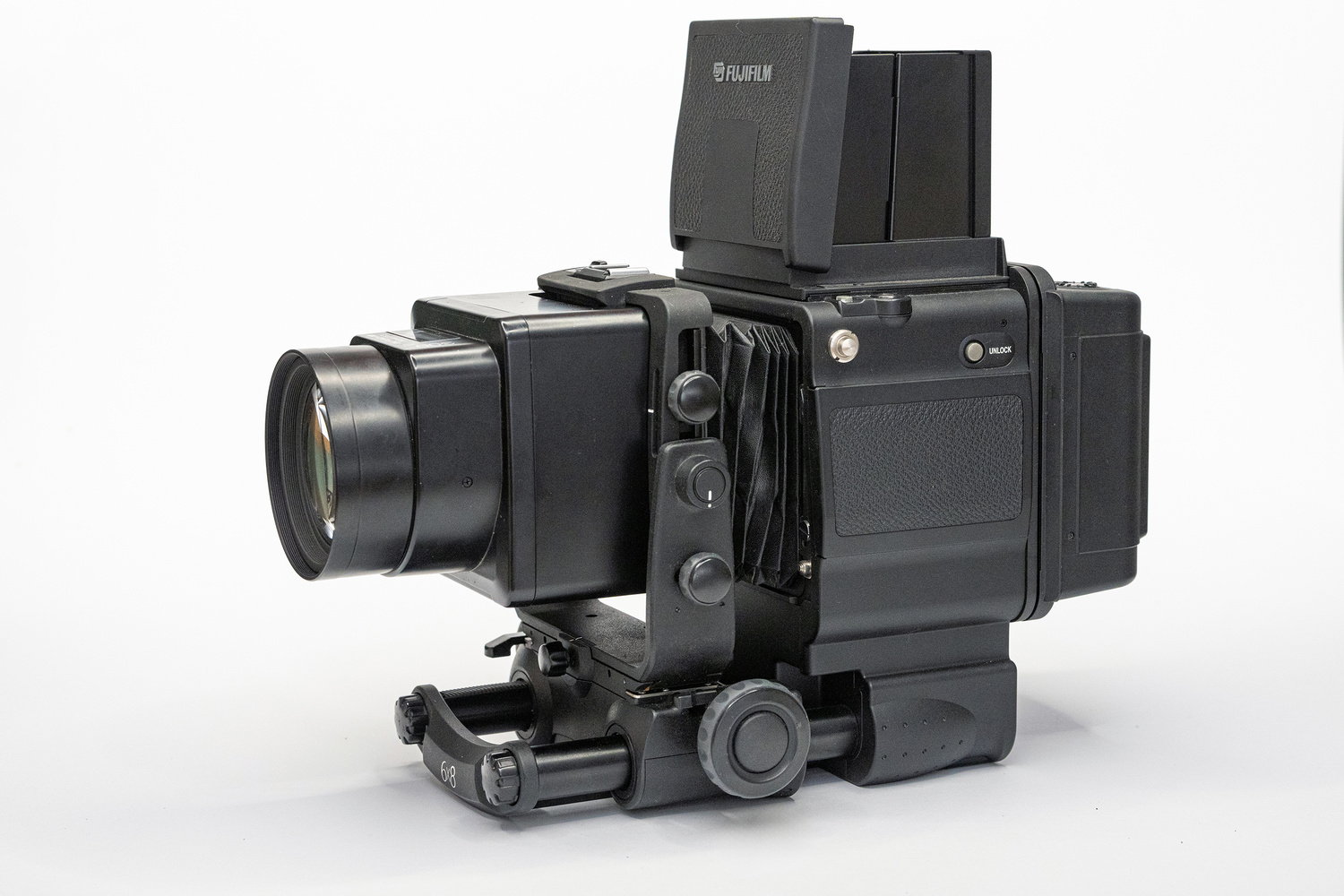
The 6x8 format provides slightly larger negatives than standard 6x7 cameras while maintaining compatibility with 120 and 220 film backs, offering exceptional image quality that approaches 4x5 large format results. The camera's modular design includes interchangeable lenses, backs, and viewfinders that create a comprehensive system capable of handling virtually any studio or location assignment. While the GX680III requires more deliberate operation than conventional medium format cameras, photographers who master its unique capabilities discover creative possibilities that justify the learning investment. For photographers seeking uncompromising technical capability with SLR convenience, the GX680III represents one of photography's most innovative and capable cameras, offering creative control that no other medium format system can provide.
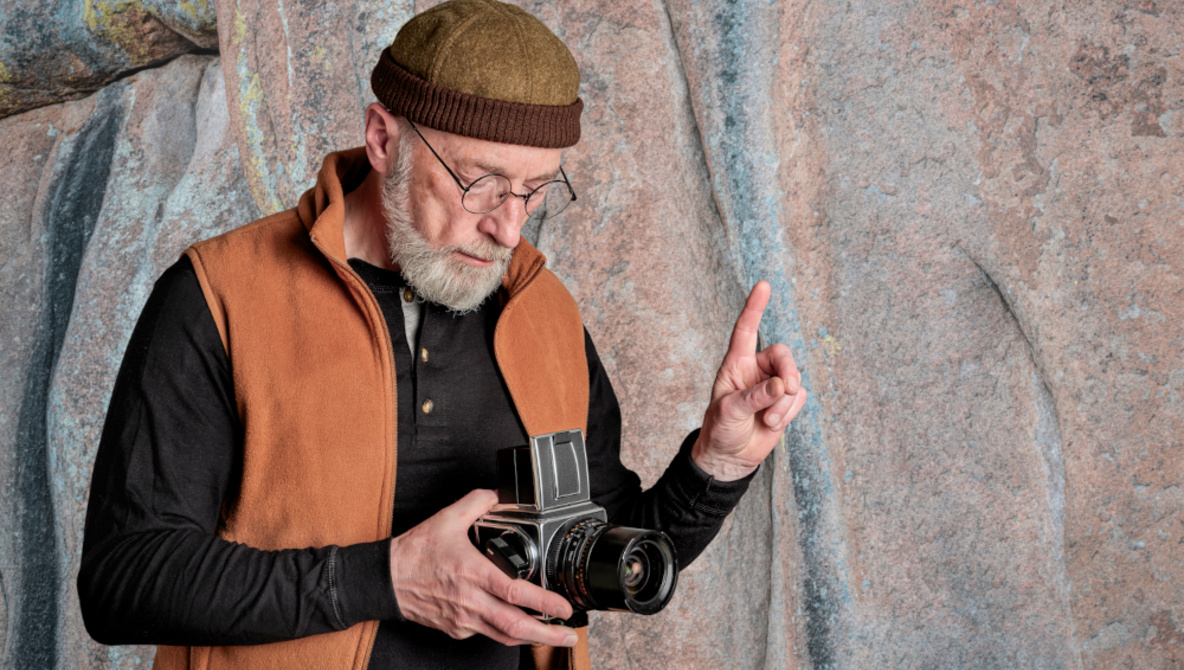






Mamiya 6 is a fabulous MF film camera if you like square frames. Collapsible lens mount is useful and cool.
I used three of the cams listed, but my clear favorite was the Hasselblad. Totally configurable to whatever you want and had a nice lens selection, as well. The Mamiya 7 II was killer, but the lack of a tele was a serious shortcoming. Also, the viewfinder needed to be calibrated annually (for me...) But those Mamiya lenses were as good as it gets.
I hav some German Franka "folders" including 6x6 and 6x9 with Schneider lenses and I use some filters for B&W film sky enhancement.... They enlarge well on my Beawle 16x20 enlarger with Schneider or Nikkor lenses.
Totally great article. Good information. I'm glad you brought up many great but lesser known cameras.
I transitioned to digital about twenty years ago and that's when I sold my Mamiya RZ ProII kit. It was rather large but the functionality made it my favorite system over the Mamiya 645ProII which my first 120 film camera or the Pentax 67II. I assisted a photographer that owned the Fuji GX680III and Contax 645 and was impressed with both.
I shot a lot of travel stories for a magazine with the Mamiya 7II. I had two bodies and all the lenses and what a wonderful set up. I cannot believe I sold that gear and what it would cost to replace it. Chromes out of that camera were brilliant and astonishing. I also have a Horseman 980, basically the same as the 985. It's also a great piece of gear but is a slow meticulous way of working.
I would like to add the Yashica Mat 124G (I still have one), a great camera. When you advance the film it sounds like a coffee grinder on heat. The Rolleiflex 2.8C (just a super smooth wonderful camera) and the Fujifilm GA645Zi. All TRUE medium format cameras and not like all this modern pretend to be kit.